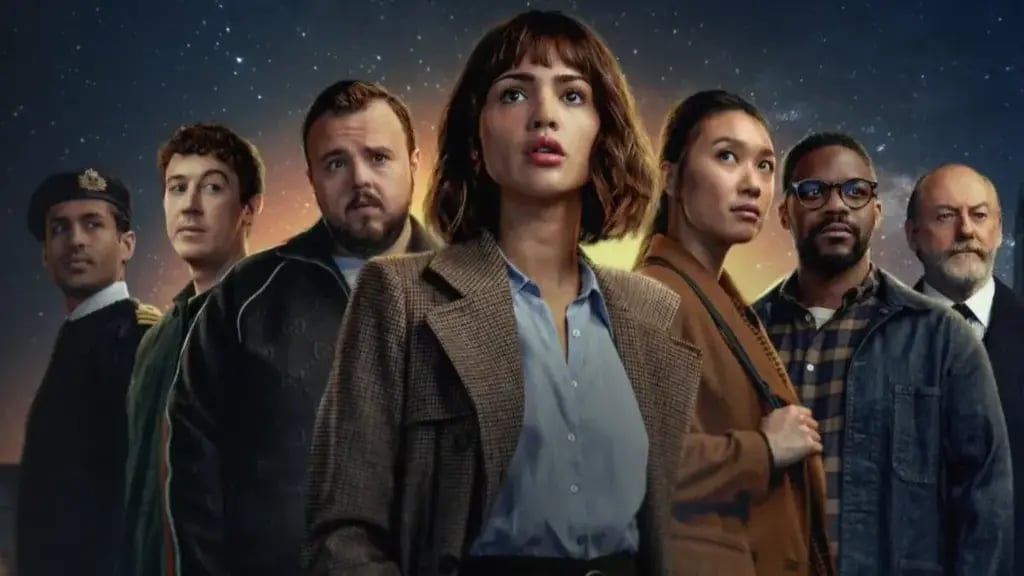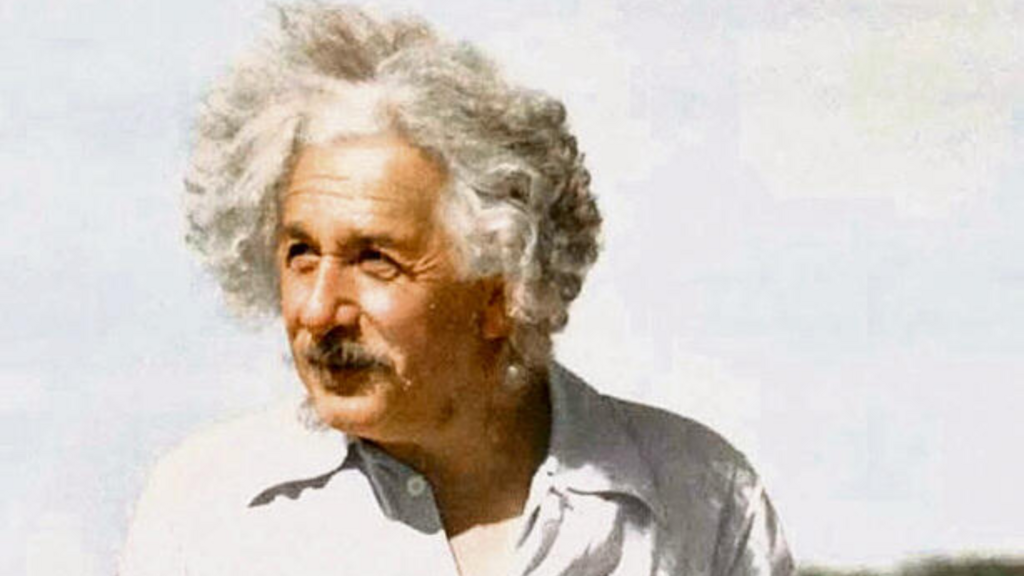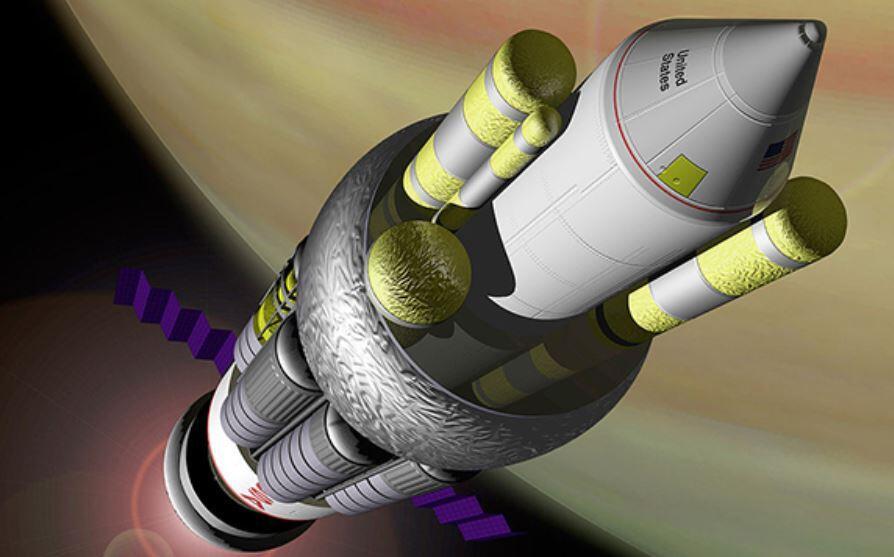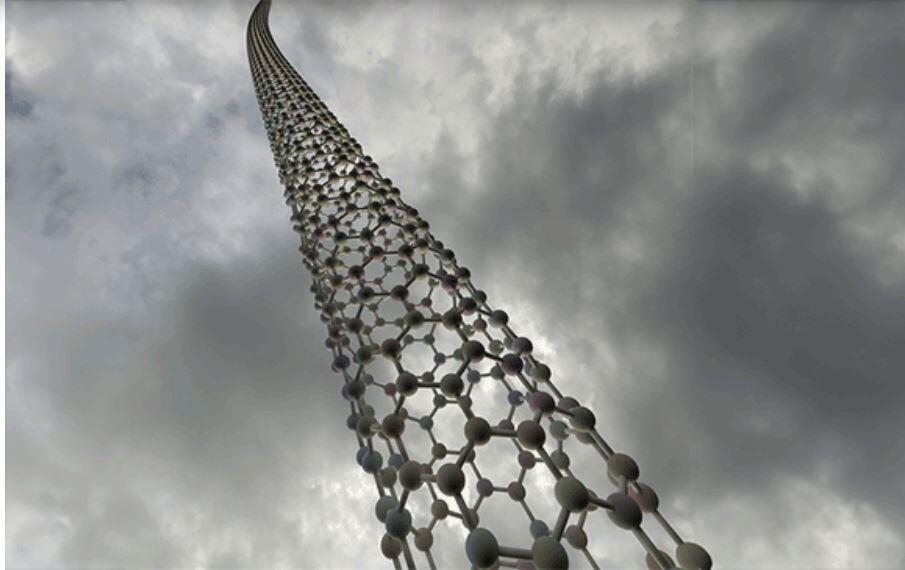Getting your Trinity Audio player ready...
The Netflix hit show '3 Body Problem', has captivated countless viewers with its fantastic blend of physics, technology, and aliens. The show is based on a book by Chinese author Liu Cixin, published in 2006, which is the first installment of the “Remembrance of Earth’s Past” trilogy.
Recently, physics has been making a cinematic comeback: after all, one of last summer's biggest movies, “Oppenheimer,” dealt with the physics of the atomic bomb and the physicists who developed it. In contrast, “Three-Body Problem” includes a lot of science fiction, yet it has kernels of truth that appear now and then. Here, we will discuss some of the physical concepts that inspired the show, many of which are being exposed to a wider audience through the small screen for the first time. Let’s get started, but stay alert—there are spoilers ahead.
Three-Body Problem
We will start, naturally, with the title of the show. The three-body problem is one of the oldest and longstanding challenges in celestial mechanics, dealing with how the Sun, Earth, and Moon influence each other in space. While the question of how two objects interact through gravity was analytically solved by Issac Newton 350 years ago - a concept taught to physics undergrads today - the behavior of a three-body system is very difficult to resolve using pen and paper. So difficult, in fact, that in most cases it is impossible.
In classical mechanics, fully describing the motion of a body requires knowing both its position and velocity at any given moment. Each body has three position components and three velocity components—lengthwise, widthwise, and heightwise. In a system with three bodies, each with six coordinates, this results in a total of eighteen coordinates.
However, a three-body system is characterized by numerous quantities that remain constant throughout the motion, such as the system's total energy and other conserved quantities. The multitude of forces acting on each body in the system, the variety of possible motions, and the constraints imposed by these conserved quantities make it extremely difficult to calculate the precise trajectory of each body.
Using approximations, Newton managed to estimate the moon's perigee—the minimum distance between the moon and Earth - but his calculations were later found to be inaccurate, estimating twice the actual distance. Subsequently, some of France's leading mathematicians, including Jean le Rond d'Alembert and his noted rival Alexis Clairaut, took up the challenge but failed to make significant progress, bringing the field to a proverbial dead end.
That is until American physicist George Hill made a breakthrough in 1878 by reformulating the problem. Hill derived what would later be known as Hill’s equation, arguing that the problem is similar to a mass attached to a spring or a ball swinging on a thin wire under the effect of gravity - what is called a "harmonic oscillator" in physical terms. Typically, in a harmonic oscillator, the frequency of motion is constant. However, in this case, the frequency of the trajectories' motion is itself a periodic function of time.
This problem laid the foundation for much of our understanding regarding periodic trajectories - a very important concept in mechanics - these are trajectories that start and end in the same location and at the same speed. Periodic trajectories exhibit steady movement, in contrast to chaotic trajectories, which are highly sensitive to minor shifts in the positions and initial velocities of the bodies, leading to disordered and unpredictable motions.
Today, the three-body problem is studied using advanced algorithms and even neural networks
Thus arose the need to characterize the stability of trajectories. One of the earliest and most useful tools developed for this purpose, as early as the end of the 19th century, is called "Poincaré maps," named after French mathematician Henri Poincaré who invented them. These maps present a specific cross-section of the trajectory to understand its nature; instead of drawing the entire trajectory, the position and velocity are examined at certain intervals that satisfy a defined mathematical condition, such as passing through the starting point.
From the obtained shape, it is possible to determine whether the trajectory is periodic, quasi-periodic, or chaotic. Today, the three-body problem is studied using advanced algorithms and even neural networks. These generate an extensive array of potential solutions for the problem, which, with the necessary adjustments, also have applications in fields such as theoretical chemistry.
In the TV show, humanity interacts with aliens who come from an even more complex system, a four-body system—three suns and a planet—called Alpha Centauri, which is presumably a chaotic system. If so, how can life exist there? In reality, the Alpha Centauri system is not chaotic. It consists of two large stars, Alpha Centauri A and B, and a small star named Proxima Centauri. Since Proxima is very small compared to its two larger companions, the system presents a three-body problem that is more akin to a two-body problem with a slight “disturbance”.
In practice, Proxima’s trajectory is periodic with a fifteen-day cycle. It is currently known to have at least three planets. The first of them to be discovered is relatively similar to Earth with a surface temperature of around zero degrees Celsius, which could presumably support life. However, the planet also experiences increased magnetic activity and is saturated with X-ray radiation, conditions that are generally considered unsuitable for life as we know it.
Communication Via Quantum Entanglement
In the series, communication between humans and aliens, including the more sinister aspects of espionage and monitoring by the aliens, are achieved using tiny supercomputers, the size of a proton, called Sophons. Two such Sophons remain with the aliens while another pair is dispatched to Earth, exchanging information with each other via quantum entanglement.
5 View gallery
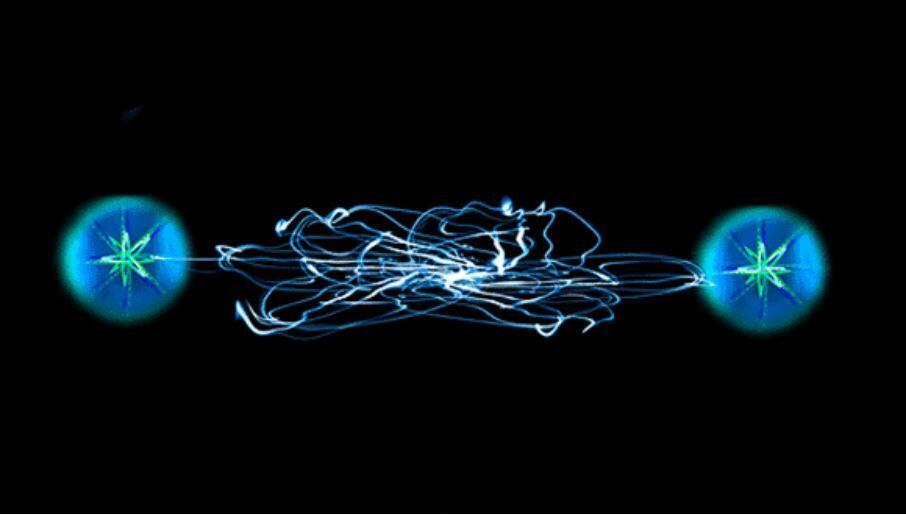

Illustration of quantum entanglement
(Photo: Victor de Schwanberg / Science Photo Library)
This concept originates from a foundational 1935 manuscript by Albert Einstein and his colleagues Boris Podolsky and Nathan Rosen (who later immigrated to Israel and became one of the most important physicists at the Technion). In their manuscript, proposing what is known as the EPR paradox (after the initials of their names), the three claimed that quantum mechanics was incomplete and needed to discard its probabilistic component. They illustrated their argument with a thought experiment termed “spooky action at a distance.”
In this experiment, two particles that were created together, with defined properties that are opposite to each other, are moved apart by an immeasurable distance. According to the concept of entanglement, measuring the property of particle A will instantaneously, faster than the speed of light, reveal information about the property of particle B, since their properties are opposite and synchronized, regardless of the distance between them. This concept of entanglement appears to contradict quantum mechanics, which posits that experiments cannot influence each other over great distances, suggesting that all physical processes are local.
Years later Irish physicist John Stewart Bell demonstrated that this paradox could be resolved with the concept of hidden variables—constraints intended to bridge the differences between quantum mechanics and classical mechanics. He showed that if a quantum system adheres to the principle of locality, the influence of one experiment on another does not occur instantaneously. Additionally, physical properties are defined by their inherent existence, and do not require measurement, a concept referred to as the principle of intrinsicness. These conclusions became known as “Bell’s Inequality.”
While classical mechanics is both intrinsic and local, quantum mechanics violates these constraints; as it cannot be intrinsic and local simultaneously. This violation was measured experimentally by physicists Alain Aspect, John Clauser and Anton Zeilinger in systems with entangled photons, earning them the Nobel Prize in Physics in 2022.
Despite this, current understanding holds that quantum entanglement does not allow for information transfer faster than the speed of light, even in theory. This is not the appropriate setting to delve into the complexities of why quantum teleportation in itself does not allow information transfer. The term ‘teleportation’ might be misleading due to its cultural connotations, but in this context, it refers to the instantaneous collapse of a quantum state at one location and the simultaneous creation of an identical state at another location. Retrieving information from this process still requires additional, classical information transfer, which is constrained by the speed of light.
Space sails constitute an old concept, where the pressure created by electromagnetic radiation, even at great distances from the Sun, is used to propel an object that is attached to the sail.
Nuclear Propulsion
Jewish-Polish mathematician Stanislaw Ulam, took part in the Manhattan Project for the development of the American nuclear bomb, where he worked alongside Robert Oppenheimer, Edward Teller, Enrico Fermi and others. After the war and the onset of the nuclear era, Ulam conceived an intriguing idea according to which nuclear power could be harnessed not for military purposes, but for interstellar travel.
In 1995 the concept began to materialize, when Ulam and his colleague Frederick Reines, who discovered the neutrino and later won a Nobel prize for the discovery, suggested that airplanes and rockets could be propelled by nuclear explosions. The concept gained momentum when it reached the desk of President Eisenhower. In the following years, "Project Orion," funded by the American government, examined this concept from a theoretical perspective. However, the project was halted in 1963 with the signing of the Treaty Banning Nuclear Tests in the Atmosphere, in Outer Space, and Under Water, and it was officially abandoned in 1965. Nevertheless, the American efforts to explore the concept continued under various programs, notably the Rover Project. However, despite substantial investment, the program was ultimately canceled without ever launching a single nuclear-powered rocket.
The concept of nuclear propulsion resurfaced during the Clinton administration but was quickly taken off the table. Recently, it has resurfaced again - and this time a date has been set for the preliminary experiments, led by Lockheed Martin and other collaborators. No longer purely science fiction.
One of the concepts presented in these programs included the use of a space sail that would harness the energy released from a series of nuclear explosions. This concept, also featured in the show, is far from delusional. Space sails constitute an old concept, where the pressure created by electromagnetic radiation, even at great distances from the Sun, is used to propel an object that is attached to the sail. This idea too, is no longer science fiction.
Nano-Fibers
In the show, one of the protagonists, a scientist named Auggie, runs a company that produces fibers just a nanometer in diameter. She is initially forced to halt her research upon receiving a message from aliens, but later resumes it to use these fibers in a quest for revenge against those in constant communication with the extraterrestrials.
These fibers are presented as being able to cut straight through diamonds; however, diamonds are rightfully known as the toughest material in nature. While theoretically, the existence of tougher materials is conceivable, in practice, diamonds are currently the hardest known material. Thus, it is improbable that any nano-fiber, regardless of its strength, could easily cut diamonds into slices.
A material that might be able to challenge the toughness of diamonds is Graphene, which consists of a single layer of carbon atoms. When graphene is shaped into nano-tubes, it exhibits interesting qualities such as flexibility and relative hardness, but it still cannot be used for cutting. Additionally, these nano-tubes are typically quite short - only a few centimeters in length - since longer tubes tend to exhibit defects, making them potentially unsuitable for cutting applications.
Current research on nano-fibers is extensive and spans many fields. Amongst other things, polymeric nano-fibers have long been proposed as a practical application in the robotics industry, to mimic human tissues. Additional applications that have been experimentally validated include uses in the electro-optics industry and in photovoltaic cells. However, using nano-fibers for cutting walls or ship sides, as depicted by Auggie in the series, remains outside the scope of current scientific pursuits.
Now All Has Been Heard - Here is The Conclusion of The Matter
The ‘3-Body Problem’, similar to many works in the science fiction genre, grounds its narrative in actual scientific concepts, presenting new ideas based on these foundations. Beyond its impressive visual effects and intricate plot, there is a positive aspect in exposing scientific ideas to a wider audience - even if these ideas are still emerging, speculative, or ahead of their time. ‘3-Body Problem’ serves both science and TV show fans well, offering a glimpse into the fascinating world of scientific possibilities. Until science fiction becomes reality, enjoy the show!


